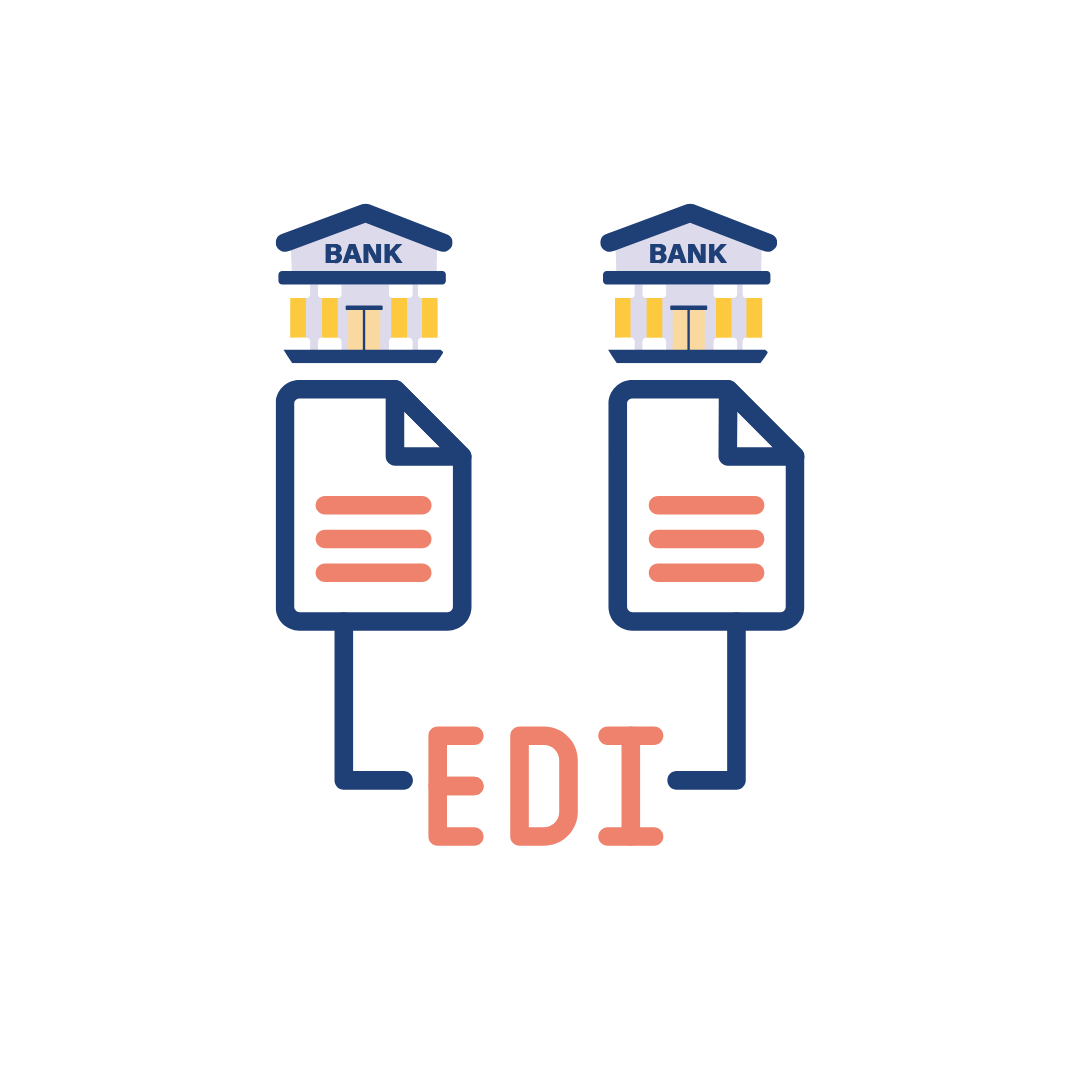Introduction
The banking sector, known for its complex transactions and stringent regulatory requirements, has found EDI a powerful ally for modernizing its processes. By facilitating the seamless exchange of financial information and automating various banking operations, EDI has become the backbone of efficient, secure, and cost-effective banking practices.
As we delve into the intricacies of EDI in banking, we’ll explore how this technology is reshaping the industry, from improving payment processing to enhancing compliance and customer satisfaction. We’ll examine the various applications of EDI across different banking functions, its benefits, challenges, and the future trends that are set to further transform the financial services landscape.
Whether you’re a banking professional looking to optimize your institution’s operations or simply curious about the technological advancements driving the financial sector forward, this comprehensive guide will provide valuable insights into the pivotal role of EDI in modern banking.

Key Takeaways
Standardized Financial Communication Transforms Operations
The banking sector leverages specialized EDI standards like ANSI X12, UN/EDIFACT, ISO 20022, and SWIFT messaging to facilitate seamless financial data exchange. These standardized formats ensure consistency and interoperability across different banking systems while meeting stringent regulatory requirements in global financial markets.Core Banking Functions Revolutionized Through Automation
EDI has transformed essential banking operations including payment processing, account management, loan processing, and trade finance. By automating these critical functions, banks achieve significant reductions in processing times, lower transaction costs, and enhanced accuracy that traditional manual processes cannot match.Enhanced Security and Compliance Management
In an industry where data protection is paramount, EDI implements advanced encryption and authentication measures that create secure channels for sensitive financial information. This technology simultaneously streamlines regulatory reporting processes, improving accuracy in compliance submissions while adapting to evolving regulatory landscapes.Operational Efficiency Yields Competitive Advantage
The elimination of paper-based processes through EDI automation delivers measurable cost savings and operational efficiencies. Real-time transaction tracking enables more effective cash flow management, while reducing manual intervention minimizes human error in critical financial transactions, creating competitive differentiation.Global Banking Capabilities Enhanced
EDI’s compatibility with international standards facilitates cross-border transactions and interbank communications essential in today’s global economy. From correspondent banking to trade finance operations, EDI enables financial institutions to overcome geographical barriers, manage liquidity across networks, and process international payments with unprecedented efficiency.
What is EDI Transaction?
An EDI transaction refers to the structured transmission of electronic business documents between organizations in a standardized format. These transactions replace manual, paper-based processes, allowing businesses to exchange information like invoices, purchase orders, and payment details seamlessly.
Key Features of EDI Transactions:
- Standardization: Uses globally recognized formats like X12 or EDIFACT.
- Automation: Reduces manual intervention in data entry and document exchange.
- Speed: Enables near-instantaneous communication between trading partners.
- Security: Ensures encrypted and secure data transfers.
In banking, EDI transactions facilitate the exchange of critical financial data, helping streamline operations and improve accuracy.
The Evolution of EDI in Banking
The journey of EDI in the banking industry is a testament to the sector’s commitment to innovation and efficiency. To fully appreciate the impact of EDI on modern banking, it’s essential to understand its historical context and evolution.
Early Days of EDI in Banking
The roots of EDI in banking can be traced back to the 1960s when financial institutions began exploring ways to automate their paper-based processes. Initially, these efforts were limited to internal systems and proprietary networks, with each bank developing its standards for electronic communication.
In the 1970s and 1980s, as the need for interbank communication grew, industry recognized the importance of standardization. This led to the development of the first EDI standards for banking, such as the ANSI X12 in North America and EDIFACT internationally. These standards laid the groundwork for more efficient and consistent data exchange between financial institutions.
The Rise of Electronic Funds Transfer
The 1980s saw a significant milestone with the widespread adoption of Electronic Funds Transfer (EFT) systems. EDI played a crucial role in this development, enabling banks to process payments and transfers electronically. This marked a turning point in banking operations, dramatically reducing the time and cost associated with financial transactions.
Internet Era and EDI
The advent of the internet in the 1990s brought new possibilities for EDI in banking. Cloud-based EDI solutions emerged, offering greater flexibility and accessibility. This period also saw the integration of EDI with emerging technologies like electronic banking and online payment systems.
Modern EDI in Banking
Today, EDI in banking has evolved into a sophisticated ecosystem of interconnected systems and standards. Modern EDI solutions leverage cloud computing, artificial intelligence, and blockchain technology to enhance security, speed, and functionality. The focus has shifted towards real-time processing, API integration, and mobile accessibility, reflecting the changing needs of banks and their customers.
Future Trends
Looking ahead, the evolution of EDI in banking is set to continue with:
- Increased adoption of AI and machine learning for predictive analytics and fraud detection
- Integration with Internet of Things (IoT) devices for enhanced data collection and processing
- Expansion of blockchain-based EDI solutions for improved security and transparency
- Development of more sophisticated real-time processing capabilities
As we explore the various applications and benefits of EDI in banking throughout this article, we’ll see how this evolutionary journey has shaped the current landscape of financial services and continues to drive innovation in the industry.
Understanding EDI in the Banking Context
At its core, EDI in banking involves the electronic transfer of structured data between banks and their various stakeholders, including customers, other financial institutions, regulatory bodies, and business partners. This data exchange occurs using predetermined formats and protocols, ensuring consistency, accuracy, and security in all communications.
The adoption of EDI in banking has been driven by several factors:
- Efficiency: EDI eliminates the need for manual data entry and paper-based processes, significantly reducing processing times and operational costs.
- Accuracy: By automating data transmission, EDI minimizes the risk of human error, ensuring that financial information is transferred with precision.
- Security: EDI systems incorporate advanced encryption and authentication measures, providing a secure channel for sensitive financial data.
- Compliance: The standardized nature of EDI helps banks meet regulatory requirements more easily by ensuring consistent and auditable data exchange.
- Integration: EDI facilitates seamless integration with various banking systems and third-party applications, enhancing overall operational efficiency.
In the banking sector, EDI is used for a multitude of purposes, including:
- Processing payments and fund transfers
- Managing account information
- Handling loan applications and approvals
- Exchanging financial statements and reports
- Conducting interbank transactions
- Facilitating trade finance operations
As we progress through this article, we’ll explore these applications in greater detail, examining how EDI is transforming each aspect of banking operations and contributing to the industry’s digital evolution.
Key EDI Standards in Banking
The effectiveness of EDI in banking relies heavily on standardization. These standards ensure that data can be exchanged seamlessly between different financial institutions, regardless of their internal systems. Let’s explore the primary EDI standards used in the banking industry:
ANSI X12
The American National Standards Institute (ANSI) X12 is one of the most widely used EDI standards in North America. In banking, it covers a range of financial transactions, including:
EDI 820: Payment Order/Remittance Advice
EDI 835: Healthcare Claim Payment/Advice
EDI 824: Application Advice
EDI 997: Functional Acknowledgment
EDI 812: Credit/Debit Adjustments
EDI 823 – Lockbox
EDI 828 – Debit Authorization
EDI 844 – Product Transfer Account Adjustment
ANSI X12 provides a structured format for these transactions, ensuring consistency and interoperability across different banking systems.
UN/EDIFACT
The United Nations Electronic Data Interchange for Administration, Commerce and Transport (UN/EDIFACT) is the international EDI standard. It’s particularly prevalent in Europe and Asia. Key EDIFACT messages used in banking include:
- PAYORD: Payment Order
- BANSTA: Banking Status
- FINSTA: Financial Statement of an Account
- CREEXT: Extended Credit Advice
UN/EDIFACT offers a comprehensive set of message types that cover various aspects of banking operations, from payments to reporting.
ISO 20022
The International Organization for Standardization (ISO) 20022 is a newer standard that’s gaining traction in the financial industry. It’s designed to create a common language for financial messaging, covering:
- Payments
- Securities
- Trade Services
- Cards
- Foreign Exchange
ISO 20022 is notable for its use of XML format, which offers greater flexibility and data richness compared to older standards.
SWIFT Standards
The Society for Worldwide Interbank Financial Telecommunication (SWIFT) has its own set of messaging standards widely used for international banking transactions. These include:
- MT 103: Single Customer Credit Transfer
- MT 202: General Financial Institution Transfer
- MT 940: Customer Statement Message
SWIFT messages are crucial for facilitating cross-border transactions and interbank communications.
Proprietary Standards
In addition to these global standards, many banks and financial networks have developed their own proprietary EDI standards. These are often used for specific types of transactions or within closed networks of financial institutions.
Importance of EDI Standards in Banking
The adoption of these standards in banking EDI offers several benefits:
- Interoperability: Banks can communicate efficiently with a wide range of partners and customers.
- Consistency: Standardized formats ensure that data is interpreted correctly across different systems.
- Compliance: Many of these standards are designed to meet regulatory requirements in various jurisdictions.
- Efficiency: Standardization reduces the need for custom integrations and data mapping.
- Global Reach: International standards facilitate cross-border transactions and global banking operations.
As the banking industry continues to evolve, these EDI standards are regularly updated to accommodate new technologies and changing regulatory landscapes. Understanding and implementing these standards is crucial for banks looking to optimize their EDI processes and maintain competitiveness in the global financial market.
EDI Applications in Core Banking Functions
Electronic Data Interchange has found extensive application across various core banking functions, revolutionizing the way financial institutions operate. Let’s explore how EDI is utilized in key areas of banking:
Payment Processing
What is an EDI Payment?
An EDI payment is a type of transaction where payment instructions are sent electronically from one organization to another via an EDI system. It includes all the necessary details for processing payments, such as:
- Amount to be paid.
- Payment terms.
- Banking information (e.g., account and routing numbers).
- Associated remittance advice.
How Does EDI Payment Work?
- Payment Initiation: The payer generates a payment file, including relevant transaction data.
- Translation: The file is converted into a standardized EDI format (e.g., X12 820).
- Transmission: The EDI payment is transmitted securely to the recipient’s bank or payment system.
- Processing: The recipient’s bank processes the payment and notifies the beneficiary.
EDI payments ensure accuracy and efficiency, reducing the risks of errors and delays associated with traditional payment methods
- Automated Clearing House (ACH) Transactions: EDI facilitates the bulk processing of electronic payments and deposits through the ACH network.
- Wire Transfers: EDI standards enable swift and secure international wire transfers, crucial for global banking operations.
- Real-Time Gross Settlement (RTGS): EDI supports the immediate settlement of high-value transactions between banks.
Benefits of EDI in payment processing include:
- Reduced processing times
- Lower transaction costs
- Enhanced accuracy and security
- Improved reconciliation processes
Account Management
EDI streamlines various aspects of account management:
- Account Opening: EDI enables the secure transmission of customer information for new account applications.
- Balance Reporting: Banks use EDI to provide real-time account balance and transaction history to corporate clients.
- Statement Generation: EDI automates the process of generating and delivering account statements to customers.
Key advantages in account management:
- Faster account setup and maintenance
- Real-time access to account information
- Reduced paperwork and manual processing
Loan Processing
The loan lifecycle benefits significantly from EDI integration:
- Loan Applications: EDI facilitates the secure transfer of loan application data between borrowers, banks, and credit bureaus.
- Underwriting: Automated data exchange speeds up the underwriting process by quickly gathering necessary financial information.
- Disbursement and Repayment: EDI enables efficient processing of loan disbursements and automated repayment schedules.
EDI’s impact on loan processing:
- Accelerated loan approval times
- Improved accuracy in credit assessments
- Enhanced monitoring of loan portfolios
Trade Finance
EDI has transformed trade finance operations:
- Letter of Credit (LC) Processing: EDI standards support the electronic issuance and management of LCs.
- Bill of Lading: Electronic transmission of shipping documents reduces delays in international trade.
- Invoice Processing: Automated invoice matching and payment processing for trade transactions.
Benefits in trade finance:
- Reduced processing times for trade documents
- Minimized errors in complex international transactions
- Improved visibility and tracking of trade finance operations
Interbank Transactions
EDI facilitates smooth communication between banks:
- Correspondent Banking: EDI supports the exchange of information and funds between correspondent banks.
- Nostro/Vostro Account Reconciliation: Automated reconciliation of interbank accounts.
- Liquidity Management: Real-time data exchange for effective liquidity management across bank networks.
Advantages in interbank operations:
- Enhanced efficiency in cross-bank transactions
- Improved accuracy in interbank settlements
- Better management of bank liquidity positions
Regulatory Reporting
EDI plays a vital role in meeting regulatory requirements:
- Suspicious Activity Reports (SARs): Automated filing of SARs for anti-money laundering compliance.
- Financial Statements: Standardized submission of financial reports to regulatory bodies.
- Risk Management Reports: Efficient transmission of risk-related data for regulatory oversight.
Impact on regulatory compliance:
- Streamlined reporting processes
- Improved accuracy and consistency in regulatory submissions
- Enhanced ability to meet evolving compliance requirements
By integrating EDI into these core banking functions, financial institutions can achieve significant improvements in efficiency, accuracy, and customer service. As we continue to explore the role of EDI in banking, we’ll see how these applications contribute to the overall transformation of the financial services landscape.
Benefits of Using EDI in Banks
The adoption of EDI in banking offers numerous advantages:
- Enhanced Efficiency
Automating financial transactions reduces manual work and speeds up processing times, ensuring quicker service delivery.
- Improved Accuracy
Standardized formats minimize errors associated with manual data entry, such as typos or mismatched details.
- Cost Savings
EDI eliminates the need for paper-based processes, reducing operational costs and environmental impact.
- Better Cash Flow Management
Real-time transaction tracking helps banks and businesses monitor cash flow and manage liquidity effectively.
- Regulatory Compliance
With secure and transparent data exchange, EDI ensures adherence to financial regulations and reporting standards.
- Global Reach
EDI’s compatibility with international standards makes it easier for banks to engage in cross-border transactions.
Conclusion
Electronic Data Interchange (EDI) has become an indispensable technology in the banking industry, revolutionizing how financial institutions operate, communicate, and serve their customers. The impact of EDI extends far beyond mere automation of data exchange. It has fundamentally transformed the very fabric of banking operations, risk management, customer service, and compliance. As the banking sector continues to evolve, adopting EDI is no longer optional—it’s a necessity for staying competitive.
Commport EDI Solutions for Banks
Need Help? Download: EDI Buyers Guide
Unlock the full potential of your supply chain with our comprehensive EDI Buyer's Guide — your first step towards seamless, efficient, and error-free transactions
Frequently Asked Questions
Banks can partner with experienced EDI providers to implement solutions tailored to their needs, ensuring smooth integration and operation.
Challenges include initial setup costs, compatibility with legacy systems, and the need for staff training.
Yes, EDI uses encryption and secure transmission protocols to ensure the confidentiality and integrity of financial data.
Industries like retail, healthcare, logistics, and manufacturing rely heavily on EDI payments for seamless financial transactions.
EDI replaces manual, paper-based processes with automated, electronic data exchange, offering greater speed, accuracy, and security.
EDI automates the exchange of payment instructions and remittance details, ensuring faster and more accurate transaction processing.





